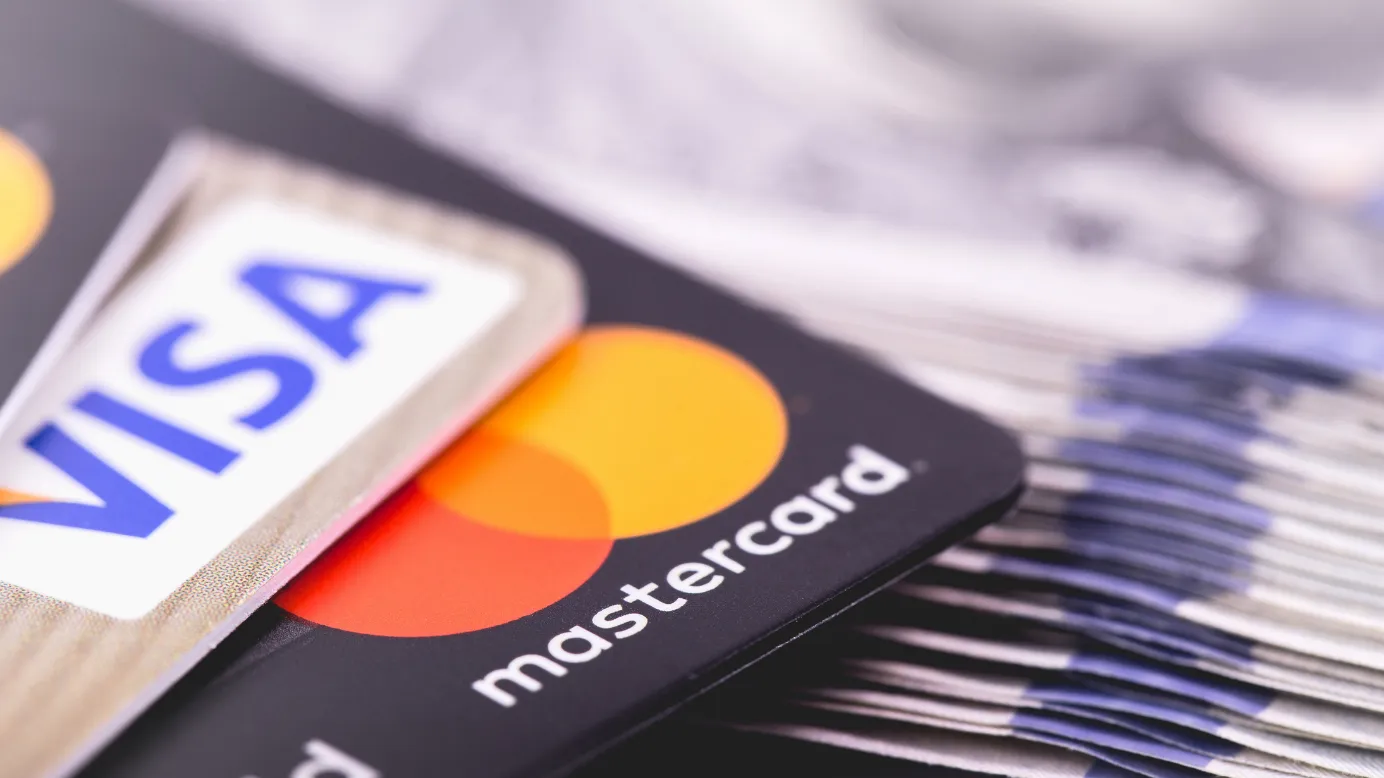Das verborgene Potenzial von Prepaid-Karten für Belohnungen
Mit Prepaid-Karten können die Empfänger bis zu dem auf die Karte geladenen Betrag für alles Mögliche Geld ausgeben. Ihre Benutzerfreundlichkeit, Einfachheit und Bequemlichkeit machen sie zu einer sehr begehrten Option für Belohnungen. Sie sind gleichwertig mit Bargeld, bieten sofortige Belohnung und können individuell gestaltet werden.
Auf dieser Seite
- Was ist eine Prepaid-Karte?
- Welchen Nutzen haben die Verbraucher von Prepaid-Karten?
- Wie können Unternehmen von Prepaid-Karten profitieren?
- Warum sind Prepaid-Karten besser als Bargeldprämien?
- Arten von Prepaid-Karten
- Die Hürden der globalen Belohnung und wie Prepaid-Karten helfen können
- Schlussfolgerung
- FAQs
Wenn Sie die Wahl hätten zwischen Geld und Geschenken als Belohnung, was würden Sie vorziehen? Zumindest die Mehrheit von ihnen würde sich für Geld entscheiden!
Apropos Belohnungen: Obwohl Geschenkkarten in verschiedenen Branchen eine beliebte Wahl sind, haben Unternehmen weltweit gesehen, dassPrepaid-Kartendas Spiel insgesamt zu verbessern.
Was ist eine Prepaid-Karte?
Prepaid-Karten sind Karten mit gespeichertem Wert - ähnlich wie Kredit- oder Debitkarten -, die zur Bezahlung von Waren oder Dienstleistungen verwendet werden können. Im Gegensatz zu Kredit- oder Debitkarten sind Prepaid-Karten jedoch nicht an ein Spar-, Giro- oder Kreditkonto bei einem Finanzinstitut gebunden.
Prepaid-Karten, eine alternative Bankkarte, ermöglichen es dem Empfänger, Geld für alles Mögliche auszugeben, bis zu dem Betrag, der auf die Karte geladen ist.
Dieser Komfort macht Prepaid-Karten auch zu einer beliebten Wahl, wenn es darum geht, eine Belohnung oder einen Anreiz zu erhalten.
Und nicht nur das - Prepaid-Karten bieten auch Benutzerfreundlichkeit, Einfachheit und die Bequemlichkeit von sehr begehrten Prämien. Sie sind gleichwertig mit Bargeld, bieten sofortige Belohnung, sind einfach zu bedienen, können an die Bedürfnisse Ihres Unternehmens angepasst werden, sind sicher und vielseitig.
Ob es darum geht, neue Kunden zu gewinnen, Mitarbeiter zu motivieren oder Vertriebskanäle zu überzeugen - Prepaid-Karten sind eine innovative Möglichkeit für Unternehmen, ihr Publikum zu binden.
Welchen Nutzen haben die Verbraucher von Prepaid-Karten?
Prepaid-Karten bieten den Verbrauchern eine Fülle von Vorteilen: Das Risiko, zu viel Geld auszugeben, ist geringer, sie sind sicherer als Bargeld, sie sind einfach zu benutzen und aufzuladen und sie sind eine echte Alternative zur Verwendung herkömmlicher Kredit- oder Debitkarten.
- Geringeres Risiko, zu viel auszugeben: Im Gegensatz zu Kreditkarten helfen Prepaid-Karten ihren Nutzern bei der Einhaltung eines Budgets, indem sie die Ausgaben auf das verfügbare Guthaben beschränken, was sie zu einem hervorragenden Instrument für ein verantwortungsvolles Finanzmanagement macht.
- Sicherer als Bargeld: Prepaid-Karten sind vor allem für Reisende eine sichere Alternative zum Mitführen von Bargeld. Außerdem bietet die schnelle und einfache Registrierung Schutz bei Verlust oder Diebstahl.
- Einfach zu verwenden und aufzuladen: Prepaid-Karten funktionieren wie herkömmliche Debit- oder Kreditkarten und können problemlos durch Überweisungen, direkte Einzahlungen oder Bareinzahlungen aufgeladen werden - sowohl online als auch vor Ort.
- Eine Alternative zu Banken: Im Jahr 2018berichtete die FDICdass 6,5 % der US-Haushalte keine Bankverbindung haben. Das bedeutet, dass 8,4 Millionen US-Haushalte immer noch ohne ein Giro- oder Sparkonto am Wirtschaftsleben teilnehmen müssen. Prepaid-Karten bieten Verbrauchern ohne Bankverbindung Zugang zu wichtigen Zahlungsdiensten.
- Sichere alternative Zahlungsform: Für diejenigen, die sich Sorgen um den Datenschutz machen, bieten Prepaid-Karten eine zusätzliche Sicherheitsebene, die das Risiko der Preisgabe persönlicher oder finanzieller Daten verringert.
Wie können Unternehmen von Prepaid-Karten profitieren?
Prepaid-Karten haben sich zu einem flexiblen und effizienten Finanzinstrument für Unternehmen entwickelt, die Zahlungen rationalisieren, Ausgaben verwalten und ihre Mitarbeiter belohnen wollen. Hier erfahren Sie, wie sie in verschiedenen Geschäftsbereichen einen Mehrwert schaffen können:
1. Verstärkung der Kundenloyalität
Indem sie eine bequeme und bevorzugte Zahlungsmethode anbieten, können Unternehmen die Beziehung zu ihren Kunden stärken und so eine langfristige Bindung fördern.
2. Ausweitung der Kundenreichweite
Das Angebot einer speziellen Prepaid-Karte, die ausschließlich in Ihrem Geschäft verwendet werden kann, bietet sowohl neuen als auch wiederkehrenden Kunden einen zusätzlichen Anreiz, häufiger bei Ihnen einzukaufen.
3. Optimierung der Kanalanreize
Unternehmen, die auf Distributoren, Wiederverkäufer und Partner angewiesen sind, können Prepaid-Karten als effiziente Möglichkeit zur Auszahlung von Prämien und Boni nutzen. Anstatt Bargeldauszahlungen oder herkömmliche Rückerstattungsmodelle zu verwalten, können Unternehmen Prämien sofort auf Prepaid-Karten übertragen, was den Verwaltungsaufwand reduziert und rechtzeitige Zahlungen gewährleistet.
4. Rationalisierung der Ausgaben für Mitarbeiter und Unternehmen
Die effiziente Verwaltung von Geschäftsausgaben ist entscheidend für die finanzielle Kontrolle und den reibungslosen Ablauf. Prepaid-Karten für Unternehmen bieten eine sichere und optimierte Lösung sowohl für die Ausgaben der Mitarbeiter als auch für allgemeine Geschäftsausgaben.
Mit Prepaid-Karten können Mitarbeiter problemlos genehmigte Einkäufe tätigen - von Geschäftsreisen bis hin zu Büromaterialien -, ohne auf Erstattungen warten zu müssen. Der Arbeitgeber wiederum kann Ausgabenlimits festlegen, Transaktionen in Echtzeit verfolgen und überhöhte Ausgaben verhindern. Dies reduziert den Papierkram, minimiert das Betrugsrisiko und verbessert die Budgetkontrolle.
Durch die Integration von Prepaid-Karten für Unternehmen können Unternehmen ein nahtloses und transparentes Finanzsystem sicherstellen, das den Ärger mit Bargelderstattungen beseitigt und gleichzeitig den Mitarbeitern eine bequeme Zahlungsmethode bietet.
5. Fuhrparkmanagement und Reisekosten
Prepaid-Kraftstoff- und Reisekarten helfen bei der Rationalisierung der Flottenausgaben, indem sie den Fahrern zweckgebundene Mittel für Kraftstoff, Wartung und andere reisebezogene Kosten zur Verfügung stellen. Unternehmen können die Ausgaben in Echtzeit überwachen, Missbrauch verhindern und sich den Ärger mit Bargelderstattungen ersparen.
6. Effiziente Zahlungen für Freiberufler und Gigworker
Für Unternehmen, die auf Freiberufler, Gigworker oder Auftragnehmer angewiesen sind, bieten Prepaid-Karten eine schnellere und flexiblere Alternative zu herkömmlichen Banküberweisungen. Anstatt auf langwierige Rechnungsprozesse zu warten, können Freiberufler Zahlungen direkt auf ihre Prepaid-Karten erhalten, was den Cashflow verbessert und eine rechtzeitige Vergütung gewährleistet.
Gig-Plattformen wie Uber haben Debitkarten wie die Uber Pro Cardeingeführt, mit denen die Fahrer sofort über ihre Einnahmen verfügen können. Mit diesem System entfallen die üblichen Zahlungsverzögerungen, so dass Freiberufler sofortigen Zugriff auf ihr Geld haben und der Cashflow insgesamt verbessert wird.
Warum sind Prepaid-Karten besser als Bargeldprämien?
Hier sind einige wichtige Gründe, die Prepaid-Karten zu einer besseren Alternative zu Bargeld machen, wenn es darum geht, jemanden zu belohnen oder einen Anreiz zu schaffen.
Kategorie | Prepaid-Karten | Bargeld |
Sicherheit und Kontrolle | 100% gesichert mit einer einzigartigen PIN, die nur vom Empfänger aktiviert werden kann. Kann bei Bedarf leicht aktiviert oder deaktiviert werden. Bietet Schutz vor Betrug und gewährleistet sichere Transaktionen. | Nicht gesichert, anfällig für Diebstahl und erfordert Bankdaten für direkte Einzahlungen. Solche Kontrollmöglichkeiten sind nicht vorhanden. Kein Schutz vor Betrug oder Missbrauch. |
Vertrieb & Zugänglichkeit | Erhältlich sowohl in Plastik- als auch in virtuellen Formaten für eine nahtlose, kontaktlose Zustellung. Sofortige Auszahlung per E-Mail oder über digitale Plattformen, unabhängig vom Standort. Sie können in großen Mengen an mehrere Empfänger verschickt werden, was Zeit und Mühe spart. | Es kann nur durch direkte Einzahlung oder physische Aushändigung verteilt werden. Die Bargeldzustellung ist kompliziert und umständlich, vor allem für entfernte Empfänger. Es muss einzeln verteilt werden, was zeitaufwändig ist. |
Verfolgung und Berichterstattung | Die Nutzung kann nachverfolgt werden, um die Verantwortlichkeit sicherzustellen. Ermöglicht Unternehmen die Analyse der Leistung von Prämienprogrammen durch Datenverfolgung. | Die Verwendung von Bargeld kann nicht nachverfolgt werden. Es gibt keinen Mechanismus zur Nachverfolgung von Bargeldanreizen. |
Anpassung & Personalisierung | Es kann mit einem Markenlogo, Farben oder Namen personalisiert werden, um die Markenerinnerung zu steigern. | Keine Branding- oder Anpassungsoptionen verfügbar. |
Flexibilität und Kaufkraft | Online und offline einlösbar, was mehr Flexibilität bei den Ausgaben bietet. Kann als einmalige oder wiederaufladbare Prämie konfiguriert werden, um fortlaufende Prämien zu erhalten. | Keine Flexibilität - nur dort, wo physisches Bargeld verwendet werden kann. Bargeld ist eine einmalige Transaktion und kann nicht wieder aufgeladen werden. |
Finanz- und Kosteneffizienz | Einsparung von Verwaltungskosten im Vergleich zum Umgang mit Bargeld. Die Mittel können für geplante Anreize und die Budgetverwaltung vorgeladen werden. | Bargeldanreize erfordern zusätzliche Ressourcen für die Bearbeitung und Verteilung. Keine Möglichkeit Bargeld im Voraus aufzuladen. |
Programmdurchführung & Bequemlichkeit | Es ist einfach einzurichten und in Anreizprogramme zu integrieren. | Es ist schwierig, Anreizprogramme zu verwalten, da es keine Nachverfolgung und Berichterstattung gibt. |
Arten von Prepaid-Karten
Ideal für alle Arten von Incentive-Programmen, ob klein oder groß - Prepaid-Karten von renommierten Netzwerken ermöglichen es den Teilnehmern Ihres Programms, frei zu wählen, wie sie ihre Prämie ausgeben möchten.
Dies ist zweifelsohne ein großer Fortschritt gegenüber der bloßen Auswahl aus einem Katalog von Optionen mit vorselektierten Gütern.
Prepaid-Karten gibt es in verschiedenen Formen, und sie können je nach Zielsetzung des Incentive-Programms eingesetzt werden:
1. Open-Loop-Prepaid-Karten
Dies ist eine der flexibelsten Arten von Prepaid-Karten und bietet die größte Attraktivität. Anders als Geschenkkarten sind Open-Loop-Prepaid-Karten nicht an eine bestimmte Marke oder ein Geschäft gebunden. Die Karteninhaber können sie für alles einlösen, was sie wollen.
Diese Arten von Karten sind:
- Universelle Akzeptanz (überall dort, wo das Netz des Kartenausstellers akzeptiert wird).
- Diese Karten sind in der Regel mit einem Mastercard- oder Visa-Logo gekennzeichnet und können überall dort eingesetzt werden, wo Kartenzahlungen akzeptiert werden.
2. Digitale Prepaid-Karten mit offenem Kreislauf
Dies sind die digitalen Versionen der Open-Loop-Prepaid-Karten, die die Flexibilität und Ästhetik der physischen Karten bieten, aber mit zusätzlichen Vorteilen der digitalen Bequemlichkeit und sofortigen Lieferung.
Diese Arten von Karten können sein:
- Sie werden schneller geliefert, weil sie virtueller Natur sind.
- sofort beim Empfänger ankommen, da sie einfach per E-Mail verschickt werden können
- Schnellere Einlösung durch den Empfänger für alles, was er gerne ausgeben möchte
3. Prepaid-Karten für mehrere Händler
Diese Karten, die auch als Netzwerkkarten bekannt sind, ermöglichen es dem Karteninhaber, die Prämie für eine bestimmte Kategorie oder eine bestimmte Gruppe von Händlern auszugeben. So können Sie beispielsweise Prepaid-Karten mit dem Motto "Gesundheit & Wellness" an Ihre Teilnehmer versenden, die bei verschiedenen Spas, Fitnessstudios und anderen Einzelhändlern im Gesundheitsbereich eingelöst werden können.
Diese Arten von Karten ermöglichen Ihnen:
- Mehrere Optionen zur Auswahl bereitstellen
- Einen kreativen Spielraum schaffen
Es besteht kein Zweifel, dass Prepaid-Karten immer eine bessere und sicherere Alternative zu Bargeldanreizen sind. Wenn Prepaid-Karten für Incentive-Programme verwendet werden, erhalten Sie viel mehr als nur ein Plastikprodukt.
Die Verwaltung von Mitarbeiterprämien, Partneranreizen und Geschäftsausgaben kann schnell zu einem logistischen Albtraum werden - verlorene Quittungen, verspätete Rückerstattungen und manuelle Nachverfolgung verlangsamen den Betrieb. Die Prepaid-Kartenlösung vonXoxoday Plum nimmt die Komplexität aus der Gleichung heraus, indem sie einen nahtlosen, sofortigen und kontrollierten Weg zur Verteilung von Geldern bietet.
Mühelose Belohnungen und Anreize - Laden Sie Guthaben auf Prepaid-Karten für Mitarbeiter, Vertriebspartner und Freiberufler ohne administrative Verzögerungen.
Spesenmanagement in Echtzeit - Legen Sie Ausgabenlimits fest, verfolgen Sie die Nutzung und verhindern Sie übermäßige Ausgaben - alles über ein zentrales Dashboard.
Flexibilität und Auswahl - Die Empfänger können ihre Prepaid-Karte in verschiedenen Kategorien verwenden, um ein lohnendes Erlebnis zu gewährleisten.
Entdecken Sie Plum und machen Sie finanzielle Auszahlungen zu einem Kinderspiel!
Die Hürden der globalen Belohnung und wie Prepaid-Karten helfen können
Belohnungen weltweit zu versenden ist schwierig. Haben Sie schon einmal internationale Marketingkampagnen oder Umfragen durchgeführt, um neue Kunden zu gewinnen? Oder Vertriebskanäle zum Kauf eines Produkts überredet? Oder zumindest versucht, entfernte Mitarbeiter einzubinden? Wenn ja, dann kennen Sie wahrscheinlich schon die Herausforderungen bei der Belohnung Ihrer globalen Teilnehmer.
Der Versand von Bargeld ist kompliziert und fast unmöglich. Zweifellos. Das wirft eine wichtige Frage auf: Warum dann nicht digitale Belohnungen verwenden? Nun, sie eliminieren die Probleme mit dem Versand (da die Lieferung sofort und per E-Mail erfolgt), abere-Geschenkkartenvon beliebten Marken wieAmazon,Walmart,oderStarbuckshaben ihre eigenen Grenzen.
Die meisten von ihnen werden nur in einigen wenigen Ländern oder vielleicht nur in den Ländern, in denen sie ausgestellt werden, akzeptiert. Zum BeispielAmazon-Geschenkkartenzum Beispiel. Wenn es um internationale Flexibilität geht, kann ihnen niemand den Rang ablaufen, aber dennoch haben Sie nicht die Möglichkeit, eine amazon.com-Geschenkkarte auf amazon.de oder dem Marktplatz von Amazon Deutschland einzulösen.
Stellen Sie sich also vor, Sie schenken jemandem, der in Deutschland sitzt, eine Amazon-Geschenkkarte aus den USA? Wird das funktionieren? Noch schlimmer: Nehmen wir an, der Empfänger ist gar kein Amazon-Kunde. Er/sie bevorzugt stattdessen Walmart. Dann macht Ihre Prämie überhaupt keinen Sinn.
Aus diesem Grund bevorzugen Unternehmen Prepaid-Karten als Belohnungsform. Als digitale Anreize sind Prepaid-Karten (wie Visa oder MasterCard) eine hervorragende Belohnungslösung.
Prepaid-Karten als Anreiz können auf zwei Arten bereitgestellt werden:
- Physische Prepaid-Karten
- Virtuelle Prepaid-Karten
Auch wenn es spannend ist, eine Prepaid-Karte aus Plastik als Belohnung zu erhalten und in der Hand zu halten, bevorzugen die Menschen heutzutage die Bequemlichkeit von mobilen oder Online-Transaktionen. Virtuelle Prepaid-Karten erfüllen nicht nur diese Erwartung, sondern machen auch die Verteilung von Prämien fälschungssicher und unmittelbar.
Obwohl das Ergebnis der Verwendung von Prepaid-Karten dasselbe ist, überwiegen die Vorteile des Versands von virtuellen Prepaid-Karten gegenüber physischen Prepaid-Karten.
Vorteile virtueller Prepaid-Karten zur Belohnung oder als Anreiz für Ihre Empfänger:
- Sofortige Lieferung
- Weniger teuer
- Schneller ausgestellt und empfangen
- Schneller eingelöst
- Mehr Flexibilität
- Akzeptiert im Geschäft oder online
- Automatische Währungsumrechnungen
- Weltweit verfügbar
- Globale Abdeckung
Das Versenden einer virtuellen Mastercard oder Visa-Prepaid-Karte ist eine perfekte und problemlose Möglichkeit, Empfänger weltweit zu belohnen oder zu motivieren. Sie werden in über 150 Ländern akzeptiert und automatisch in die jeweilige Landeswährung umgerechnet.
Vor allem aber bieten Prepaid-Karten Händlern und Unternehmen eine phänomenale Möglichkeit, das Kaufverhalten der Nutzer zu verstehen.
So kann beispielsweise ein Marktforscher in den USA virtuelle Visa-Prepaid-Karten im Wert von 50 USD kaufen und diese an mehrere Umfrageteilnehmer in Australien, Indien und Kanada senden. Der Empfänger kann die aufgeladene Währung von 50 USD in AUD, INR und CAD verwenden, um vor Ort einzukaufen.
Der Unterschied zwischen einerGeschenkkarte und einer Prepaid-Kartesieht minimal aus, liegt aber meilenweit auseinander. Welches ist das bessere Geschenk - Zeit, sich zu entscheiden.
Schlussfolgerung
In der Regel werden Prepaid-Karten mit verschiedenen Finanzinstrumenten sowie mit Tracking-Tools integriert, die ausschließlich zur Lösung von Geschäftsproblemen entwickelt wurden.
Abschließend lässt sich sagen, dass sich die Wahl, eine Belohnung oder einen Anreiz zu erhalten, geändert hat. Das digitale Zeitalter hat Bargeldtransaktionen verblassen lassen. Sie werden nicht mehr bevorzugt. Virtuelle Prepaid-Karten haben sich durchgesetzt, weil sie eine viel effizientere und greifbarere Art sind, eine Belohnung zu erhalten. Darüber hinaus lassen sie sich weltweit leichter verteilen und bieten echte Wahlmöglichkeiten.
Plum macht digitale Belohnungen mühelos und bietet eine nahtlose Prepaid-Karten-Lösung die es Unternehmen ermöglicht, Anreize auf der ganzen Welt mit Leichtigkeit zu verteilen. Mit sofortiger Lieferung, Unterstützung mehrerer Währungen, Echtzeit-Tracking und einem umfangreichen Prämienkatalog sorgt Plum für ein lohnendes Erlebnis für Unternehmen und Empfänger.
Verabschieden Sie sich von veralteten Bargeldtransaktionen und begrüßen Sie die Zukunft der digitalen Belohnungen.Buchen Sie eine kostenlose Demo und wir bringen Sie zum Laufen!
FAQs
1. Warum sollten Sie sich für virtuelle Prepaid-Geschenkkarten entscheiden?
Prepaid-Geschenkkarten sind von Natur aus dynamisch. Sie können überall eingesetzt werden, entweder für alles oder nur für bestimmte Ausgaben. Sie bieten sowohl wiederkehrende Anreize als auch einmalige Belohnungen, die die Loyalität fördern können. Ob Sie das Kundenverhalten belohnen, um häufige Käufe zu fördern, oder ob Sie Ihre Mitarbeiter oder Vertriebspartner für leistungsbezogene Initiativen belohnen, Prepaid-Karten fördern das Engagement.
2. Können Prepaid-Karten personalisiert werden?
Ja, das Branding einer Prepaid-Geschenkkarte mit Ihrem Logo und Markennamen ist zu 100 % möglich. In der Tat ist das Branding eine hervorragende Möglichkeit, das Bewusstsein zu schärfen und das Kundenverhalten zu beeinflussen. Alles, was Sie brauchen, ist ein guterAnbieter von Prämienauszahlungslösungender Ihnen nicht nur dabei hilft, Ihre Kartenanforderungen zu erfüllen, sondern Ihnen auch ermöglicht, einzigartige Anreizsysteme zur Belohnung Ihrer Zielgruppe zu schaffen.
3. Wie erhalten die Empfänger eine virtuelle Visa/Mastercard?
Das Verfahren umfasst 3 einfache Schritte:
- Schritt 1:Die Empfänger erhalten eine E-Mail mit der Prämienzahlung, der Möglichkeit, ihre Prepaid-Karte zu registrieren, und einem Link, über den sie das aufgeladene Geld anfordern können.
- Schritt 2:Sobald die Registrierung der Prepaid-Karte abgeschlossen ist, ist ihre Mastercard- oder Visa-Prepaid-Kartennummer zur sofortigen Verwendung bereit.
- Schritt 3:Die Empfänger haben auch die Möglichkeit, digitale Brieftaschen zu erstellen, um einfach auf ihre Mastercard- oder Visa-Nummer zuzugreifen und sie zu sichern.
4. Gibt es Prepaid-Karten mit Verfallsdatum?
Ja, sowohl physische als auch virtuelle Prepaid-Karten (wie Visa- oder Mastercards) haben ein Verfallsdatum. Dies hängt jedoch auch von der Art der Mastercard oder Visa-Karte ab, die Sie wählen. Die meisten Karten haben ein Verfallsdatum von 6 bis 12 Monaten ab dem Ausstellungsdatum.
5. Sollten Sie eine Mastercard oder eine Visa-Prepaid-Karte verwenden?
Alle Mastercard- und Visa-Prepaid-Karten funktionieren auf die gleiche Weise. Allerdings hängt Ihre Wahl weitgehend von der Währung ab, in der Sie die Prämie ausgestellt haben möchten.
6. Wie sieht die weltweite Abdeckung von Mastercard und Visa Prepaid aus?
Was die Länderabdeckung betrifft, so wird Visa in über 200 Ländern und Gebieten akzeptiert, während Mastercard in 210 Ländern akzeptiert wird. Was die weltweite Akzeptanz betrifft, so liegt Visa mit 56,7 Millionen auf der höheren Seite als Mastercard mit 47,7 Millionen. Insgesamt haben sowohl Visa als auch Mastercard eine ähnliche weltweite Akzeptanz.


















